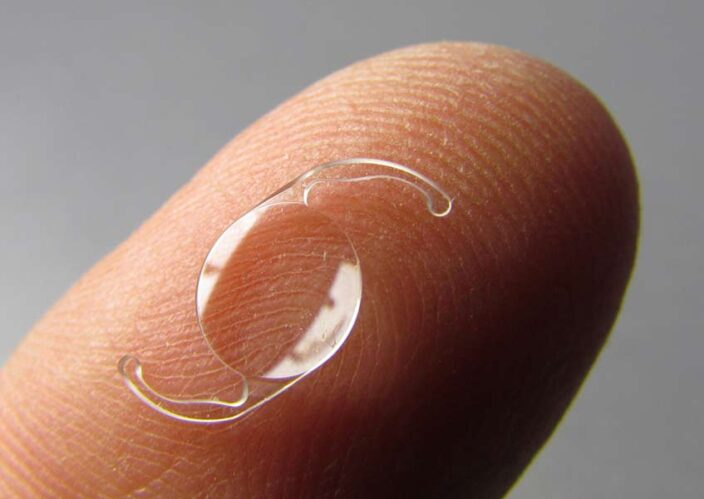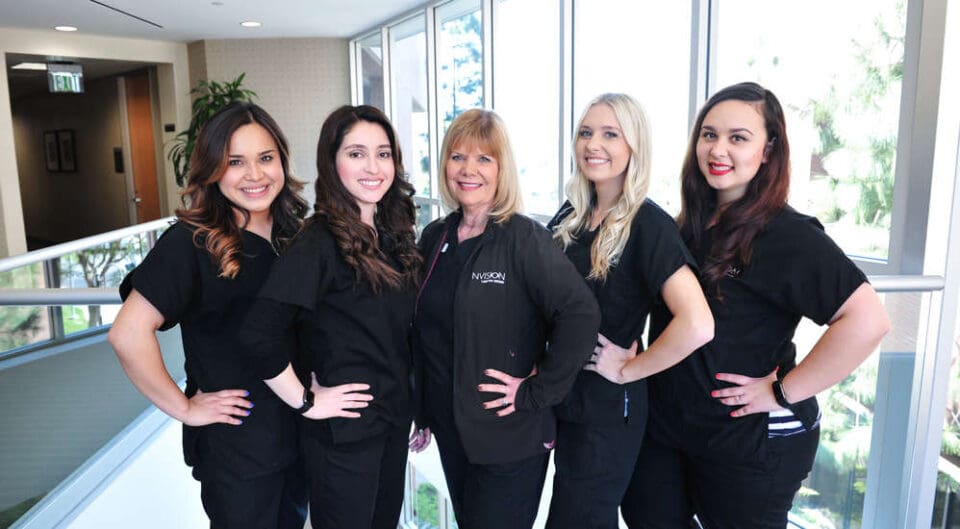
NVISION Eye Centers - Torrance-South Bay
NVISION Torrance - LASIK & Cataract Surgery
NVISION Eye Centers: Top-Rated LASIK & Cataract Surgery in Torrance & South Bay
Looking for LASIK in Torrance or expert cataract surgery in South Bay? Our team of experienced Torrance eye doctors offers cutting-edge laser vision correction and personalized treatment plans to help you achieve clearer, sharper vision.
With advanced LASIK technology and a patient-first approach, we serve Torrance, Redondo Beach, Palos Verdes, Manhattan Beach, and the greater South Bay area. Whether you’re considering LASIK eye surgery in Torrance or seeking a trusted South Bay cataract surgeon, we’re here to provide world-class vision care.
LASIK Eye Surgery in Torrance & South Bay
LASIK surgery is one of the most popular vision correction options, reshaping the cornea to reduce or eliminate the need for glasses and contacts. If you’re considering LASIK in Torrance, our expert surgeons will guide you through the process and help determine if you’re a good candidate.
- PRK (Photorefractive Keratectomy): Individuals with too-thin corneas may require PRK, where the outer layer of the cornea is dissolved prior to reshaping corneal tissue with a laser.
- LASEK (Laser Epithelial Keratomileusis): The outer layer of the cornea (epithelium) is temporarily removed prior to correcting vision with a laser, and the cornea regenerates naturally over time. Learn more about the difference between LASIK and LASEK.
- SMILE (Small Incision Lenticule Extraction): This procedure helps correct nearsightedness and astigmatism by removing a lenticule through a small, 4mm incision, which reshapes the cornea to correct vision. Individuals tend to report faster recovery time from SMILE when compared to LASIK.
- EpiLASIK: In EpiLASIK, a epikeratome is used to separate and preserve the epithelial layer before reshaping the cornea with a laser.
Cataract Surgery in Torrance & South Bay
Cataracts can cause blurry vision, glare, and difficulty with night driving. If you’re experiencing these symptoms, our Torrance cataract surgeons can help.
What to Expect from Cataract Surgery:
- Quick, Outpatient Procedure – Surgery typically takes only 15-20 minutes
- Rapid Recovery – Most patients experience improved vision within days
- Advanced Lens Implants – Choose premium lenses for crisper, sharper vision
We offer cataract surgery in Torrance and South Bay, serving patients from Redondo Beach, Palos Verdes, and Manhattan Beach. Our team is committed to delivering world-class vision care with personalized attention.
Why Choose NVISION?
- Torrance’s Most Trusted LASIK & Cataract Surgeons
- Advanced Technology for Customized Vision Correction
- Experienced, Board-Certified Torrance Eye Doctors
- Comprehensive Care for LASIK, Cataracts & General Eye Health
Take the First Step Toward Clear Vision – Schedule Your Consultation Today!
Whether you’re searching for LASIK in Torrance, cataract surgery in South Bay, or a trusted Torrance eye doctor, our team is here to provide life-changing vision correction.
- Call now or book online to schedule your FREE consultation!
- Serving Torrance, Redondo Beach, Palos Verdes & the entire South Bay region
Your best vision starts here—don’t wait to experience the freedom of clear sight!
Not sure if LASIK is right for you?

99% SUCCESS RATE 99% of NVISION patients see 20/20 or better after LASIK

RAPID RECOVERY Resume your normal activities in 24 hours

COMFORT-FOCUSED LASIK is virtually painless and completed in minutes
NVISION Eye Centers - Torrance-South Bay
23550 Hawthorne Blvd #220Torrance, CA 90505
Monday: 8 AM - 4:30 PM
Tuesday: 8 AM - 5 PM
Wednesday: 8 AM - 5 PM
Thursday: 8 AM - 5 PM
Friday: 8 AM - 5 PM
Saturday: Closed
Sunday: Closed
Leslie Mejia
Everyone was friendly and I had full trust in Dr. Lusby. Even though the surgery only lasted 10 minutes or so, it was a bit uncomfortable. However, Dr. Lusby and ...
Ana Marquez
From the moment I stepped in for a consult until the moment I stepped out the day after my procedure I had the best care I could possibly imagine. Tests ...
Charlie M
Currently posting this review after day 1 of my Contoura procedure. The actual surgery was very quick and I felt at ease during the few minutes it took. I'm currently ...
Hurry, Offer Ends Soon
Book now for $1,000 off LASIK* + Enjoy Easy and Fast LASIK Financing**
Vision Correction Procedures in Torrance
Today's life-changing procedures make it possible to improve your vision to 20/20—or better.
LASIK Eye Surgery
LASIK eye surgery is a safe, highly effective solution to correct vision and eliminate the need for glasses or contacts. At NVISION, our expert surgeons use state-of-the-art technology and advanced techniques to deliver exceptional results and have you back to your routine quickly.

EVO ICL™ (Implantable Collamer Lens)
Say goodbye to glasses and contacts with EVO ICL™! This advanced procedure is an excellent option for patients who aren’t LASIK candidates. By placing a biocompatible lens in your eye—without removing the natural lens—EVO ICL™ corrects nearsightedness and astigmatism, providing clear, long-lasting vision.

Cataract Surgery
Cloudy vision holding you back? Our advanced cataract surgery, featuring laser-assisted technology and lifestyle lenses, can restore your sight and help you enjoy life’s moments clearly again.

Refractive Lens Exchange (RLE)
Refractive Lens Exchange (RLE) replaces your eye’s natural lens with a clear, artificial one—improving your vision and reducing your dependence on glasses or contacts.
Sometimes called Custom Lens Exchange (or CLE), RLE is popular option for adults over 40 who want to correct nearsightedness, farsightedness, or astigmatism—and it’s a smart, preventative solution before cataracts ever develop.

Other Procedures
Contoura® Vision LASIK
What is Contoura® Vision LASIK?
Contoura® Vision LASIK is an advanced form of LASIK eye surgery that utilizes topography-guided technology to tailor the laser treatment to the unique characteristics of an individual’s cornea. This technology aims to provide a more personalized and precise correction of refractive errors, including nearsightedness, farsightedness, and astigmatism. Contoura® Vision creates a highly precise and accurate map of a patient’s eyes measuring up to 22,000 unique elevation points on each eye.
Key features of Contoura® Vision LASIK include:
- Topography-Guided Treatment:
Contoura® Vision LASIK utilizes detailed corneal mapping or corneal topography to create a highly customized treatment plan. This map captures thousands of data points on the cornea, allowing for a more precise analysis of its shape and irregularities. - Personalized Correction:
The topography-guided technology enables the laser to precisely reshape the cornea based on the unique imperfections detected in the corneal map. This personalized approach aims to address higher-order aberrations, improving not only traditional refractive errors but also the overall quality of vision. - Reduced Glare and Halos:
Contoura® Vision LASIK is designed to reduce the occurrence of visual disturbances such as glare and halos, which can be associated with certain refractive errors. The customized treatment may result in improved night vision and reduced sensitivity to light. - Potential for Better Visual Outcomes:
The goal of Contoura® Vision LASIK is to achieve superior visual outcomes by optimizing the correction based on the individual characteristics of the patient’s cornea.
It’s important to note that the availability of Contoura® Vision LASIK may vary, and not all LASIK centers offer this specific technology. If you are considering LASIK surgery and are interested in Contoura® Vision LASIK, it’s recommended to consult with an experienced refractive surgeon or LASIK eye doctor who can assess your candidacy and discuss the available options for personalized laser vision correction.
PRK Surgery (Photorefractive Keratectomy)
What is PRK Surgery?
PRK Surgery (Photorefractive Keratectomy) is a type of laser eye surgery that is used to correct refractive errors such as nearsightedness (myopia), farsightedness (hyperopia), and astigmatism. PRK is an alternative to LASIK eye surgery and is particularly suitable for individuals who may not be candidates for LASIK due to certain corneal characteristics.
Overview of the PRK surgery process:
- Corneal Epithelium Removal:
- In PRK, the surgeon begins by removing the thin outer layer of the cornea called the epithelium. This can be done using an alcohol solution, a special brush, or a laser.
- Laser Reshaping of the Cornea:
- Once the epithelium is removed, a laser is used to precisely reshape the cornea. The laser ablates or removes microscopic amounts of corneal tissue based on the patient’s refractive error. The goal is to correct the curvature of the cornea and improve the focus of light on the retina.
- Healing Process:
- Unlike LASIK, where a corneal flap is created, PRK does not involve creating a flap. Instead, the corneal surface is allowed to regenerate naturally. The healing process involves the growth of new epithelial cells over the treated area.
- Post-operative Care:
- Following PRK surgery, patients are given medicated eye drops to aid in the healing process and prevent infection. Recovery may take a bit longer compared to LASIK, and patients may experience temporary discomfort during the initial days.
Key considerations for PRK surgery include:
- Corneal Thickness: PRK may be a suitable option for individuals with thinner corneas who may not be ideal candidates for LASIK.
- Occupational Considerations: PRK may be recommended for individuals with occupations or lifestyles that carry a risk of corneal injury, as it eliminates the creation of a corneal flap.
- Healing Time: The initial visual recovery may take longer with PRK compared to LASIK. Patients typically experience optimal vision several weeks after the procedure.
PRK is a well-established and effective procedure for vision correction, and its suitability depends on individual factors. It’s important to consult with an experienced refractive surgeon or eye care professional to determine the most appropriate laser eye surgery option based on your eye health and lifestyle.
Pterygium Surgery
Pterygium surgery is performed under topical anesthesia on an outpatient basis.
Corneal Collagen Crosslinking (CXL)
Keratoconus is a progressive disease of the cornea. With collagen cross-linking (CXL), you can halt the progression of keratoconus by strengthening your cornea.
Lifestyle Lenses
Lifestyle lenses are a premium lens option that offers a more functional range of vision, and are designed to reduce the need for distance and reading glasses.
We offer the latest and most advanced lifestyle lens on the market.
Monovision LASIK
Monovision lasik can treat presbyopia. One eye would remain slightly nearsighted while correcting your other eye for distance vision. With both eyes open, you’ll experience clear and comfortable vision both near and far.
Recommended Reading



NVISION Eye Surgeons in Torrance-South Bay
Get to know our NVISION eye surgeons in Torrance-South Bay, including their eye care specialties, certifications, experience, other locations served, and more!

Dr. Brar has been a board-certified ophthalmologist for more than 15 years, and has performed over 15,000 eye surgeries. He specializes in all-laser Custom LASIK, PRK, cataracts, intraocular lens implants and Wavefront technology.





